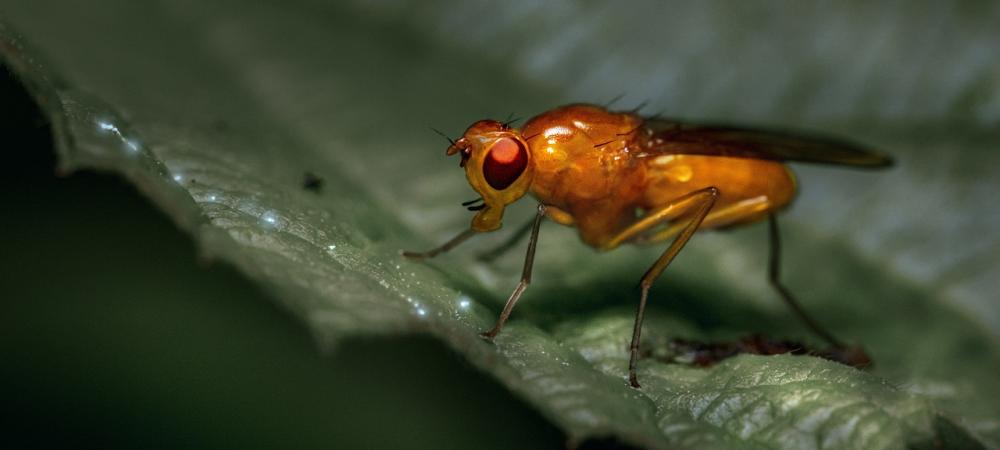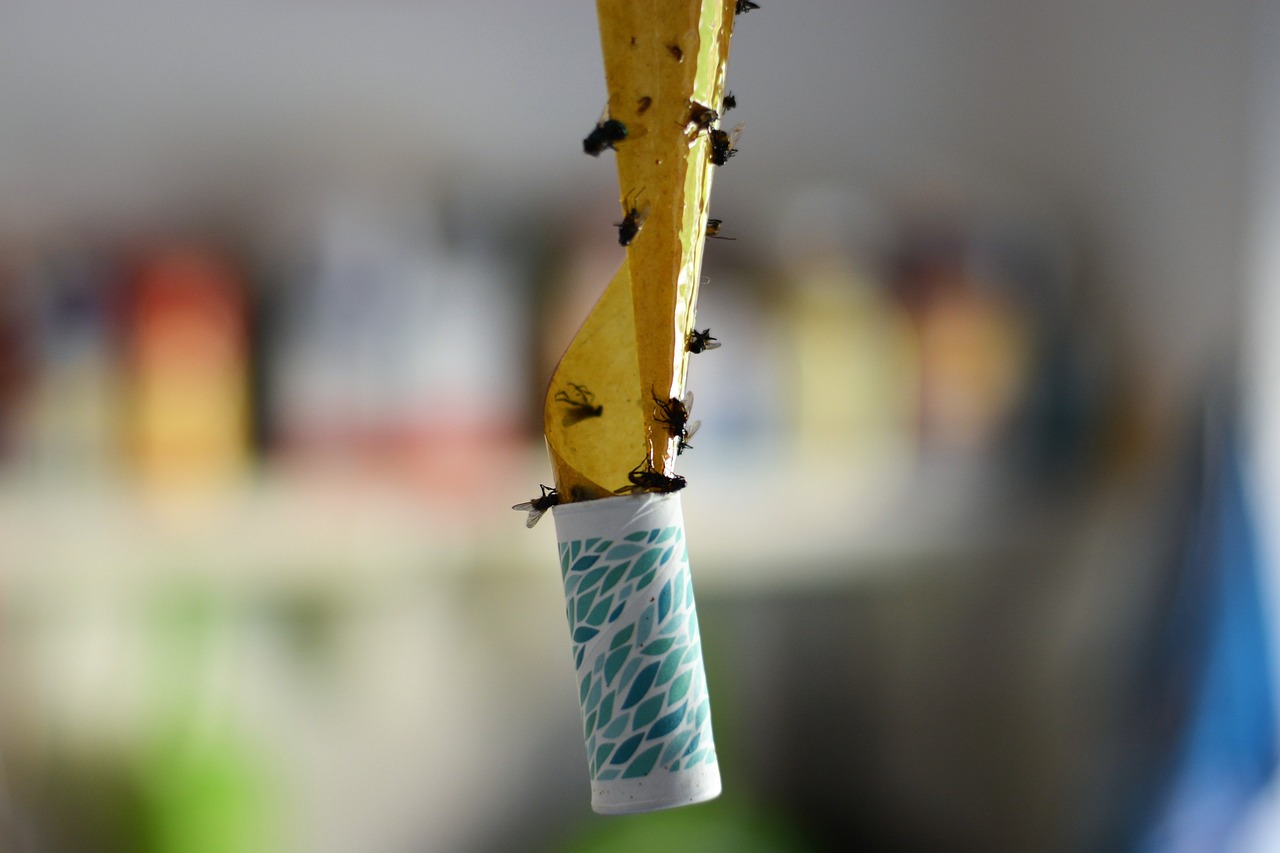How To Get Rid Of Fruit Flies

Are fruit flies taking over your kitchen? These tiny pests multiply quickly, turning fresh produce into a breeding ground before you even realize it. If you’re tired of swatting at them and wondering why they keep coming back, you’re in the right place. This guide will show you how to get rid of fruit flies fast and keep them from returning.
Quick Answer: How to Get Rid of Fruit Flies
If you need a fast solution, follow these steps:
- Remove overripe fruits and veggies from your kitchen.
- Wipe down surfaces to eliminate sugary residues.
- Store produce in the fridge or sealed containers.
- Set DIY fruit fly traps using vinegar or overripe fruit.
- Use commercial sticky traps for larger infestations.
- Keep trash bins sealed and empty them regularly.
- Call a professional if the infestation persists.
For detailed solutions, keep reading!
What Are Fruit Flies and Why Are They in My Home?
Fruit flies (Drosophila melanogaster) are tiny, fast-breeding insects attracted to ripening and decaying organic matter. They lay hundreds of eggs on fruits, vegetables, and moist surfaces, which hatch into larvae within 24 hours. This is why even a small fruit fly problem can quickly turn into a full-blown infestation.
Common Causes of Fruit Fly Infestations:
- Overripe or decaying fruits and vegetables left out.
- Spilled juices, alcohol, or sugary residues on counters.
- Dirty drains and garbage disposals.
- Unsealed trash bins and compost piles.
- Damp dish rags or sponges that hold food particles.

7 Effective Ways to Get Rid of Fruit Flies
1. Eliminate Their Food Source
The first and most crucial step is to remove anything attracting fruit flies. Check for overripe produce, food scraps, and spilled liquids, and dispose of them in sealed trash bags. Clean up forgotten fruits in the pantry or fridge and regularly wipe down countertops and sinks.
2. Deep Clean Your Kitchen
Fruit flies aren’t just drawn to produce—they love sticky messes and food particles. To prevent them from breeding:
✔ Wipe down counters and tables with a vinegar-based cleaner.
✔ Scrub sink drains with baking soda and boiling water.
✔ Mop floors to remove spilled juices and sticky residues.
✔ Keep dish sponges and rags dry to avoid moisture buildup.
3. Store Fruits and Vegetables Properly
Instead of leaving fruit out on the counter, store it in the fridge or sealed containers. This slows the ripening process and removes their main food source. If you prefer room-temperature fruit, consider using mesh produce covers to keep flies away.
4. Set Up DIY Fruit Fly Traps
Once your kitchen is clean, it’s time to trap the lingering fruit flies. Here are three easy traps you can make at home:
Trap Type
Materials Needed
How It Works
Vinegar Trap
Apple cider vinegar, dish soap, plastic wrap
Flies are drawn to the vinegar, but the soap prevents them from escaping.
Fruit Trap
Overripe fruit, plastic wrap, jar
The scent lures flies in, but they struggle to find their way out.
Cone Trap
Paper cone, apple cider vinegar, bottle
The cone directs flies into the bottle, where they become trapped.
To use these traps, place them near high-activity areas like the fruit bowl, sink, or trash can.
5. Use Commercial Fruit Fly Traps and Sprays
If DIY traps aren’t enough, you can buy pre-made sticky traps, UV light traps, or fruit fly sprays. These products are designed to attract and eliminate fruit flies more efficiently than homemade solutions.
6. Keep Trash Cans and Drains Sealed
Fruit flies breed in garbage bins, drains, and compost piles. To keep them out:
✔ Use trash cans with tightly sealed lids.
✔ Empty garbage regularly, especially if it contains food scraps.
✔ Pour boiling water or vinegar down drains to kill eggs and larvae.
✔ Freeze compost scraps instead of keeping them in warm areas.
7. Call a Professional Exterminator
If your fruit fly problem persists despite your best efforts, it may be time to call in the pros. Pest control experts can identify hidden breeding sources and provide targeted treatments to eliminate fruit flies quickly and prevent future infestations.
How to Prevent Fruit Flies from Coming Back
Once you’ve eliminated fruit flies, take these steps to keep them away:
- Wash produce immediately after buying it to remove eggs before bringing it indoors.
- Clean your sink drain weekly with baking soda, vinegar, and hot water.
- Store alcoholic beverages and juices properly, sealing open containers.
- Use essential oils like lavender or peppermint to repel fruit flies naturally.
- Keep doors and windows screened to prevent outdoor fruit flies from entering.
FAQ About Fruit Flies
✔ Why do I suddenly have fruit flies? Fruit flies are attracted to overripe fruit, sugary spills, and moist areas. If you recently brought in produce, left a drink out, or have a dirty drain, they may have found a breeding spot.
✔ How long do fruit flies live? Fruit flies live about 40–50 days, but they reproduce rapidly. A single female can lay 500 eggs, leading to infestations in days.
✔ Do fruit flies go away on their own? Not usually. Without intervention, fruit flies will continue to reproduce as long as they have access to food and moisture.
✔ Are fruit flies dangerous? Fruit flies aren’t directly harmful, but they can carry bacteria and contaminate food. It’s best to eliminate them quickly.
✔ What’s the fastest way to get rid of fruit flies? Removing food sources, deep cleaning your kitchen, and using vinegar traps are the fastest methods to eliminate fruit flies.
Get Rid of Fruit Flies for Good with Blue Door Pest Control
If you’re tired of dealing with fruit flies, let Blue Door Pest Control handle it for you. We offer same-day service and proven treatments to eliminate fruit flies fast.
Call now and mention this blog for $100 off your first treatment! - Serving Jupiter, FL , Port Salerno, West Palm Beach and surrounding areas.
Final Thoughts
Fruit flies may be small, but they’re persistent. By following these 7 proven methods, you can eliminate them quickly and prevent future infestations. Keep your kitchen clean, set traps, and take preventive measures to make your home a no-fly zone.
Got a fruit fly problem you can’t solve? Blue Door Pest Control is here to help—contact us today!
